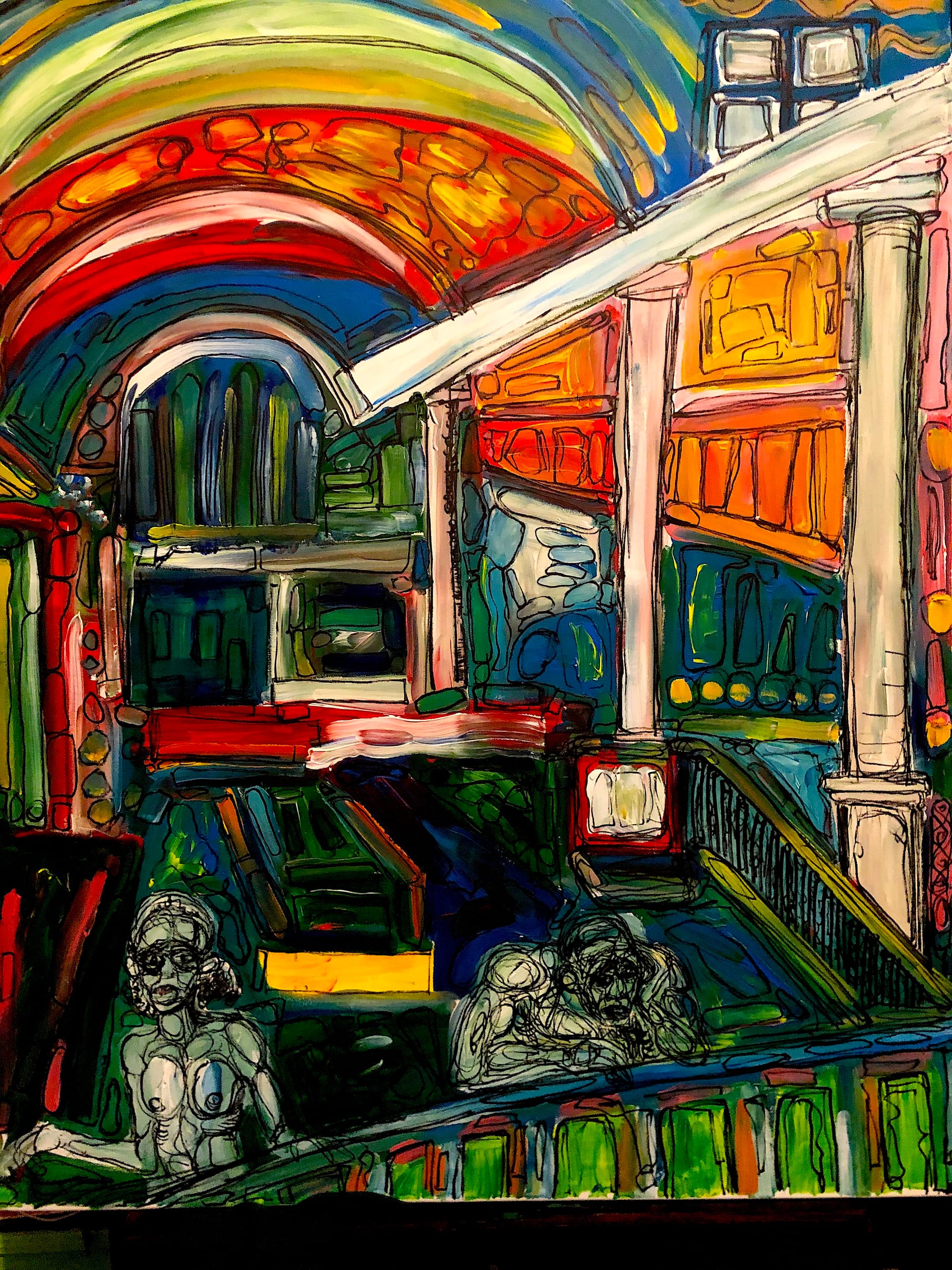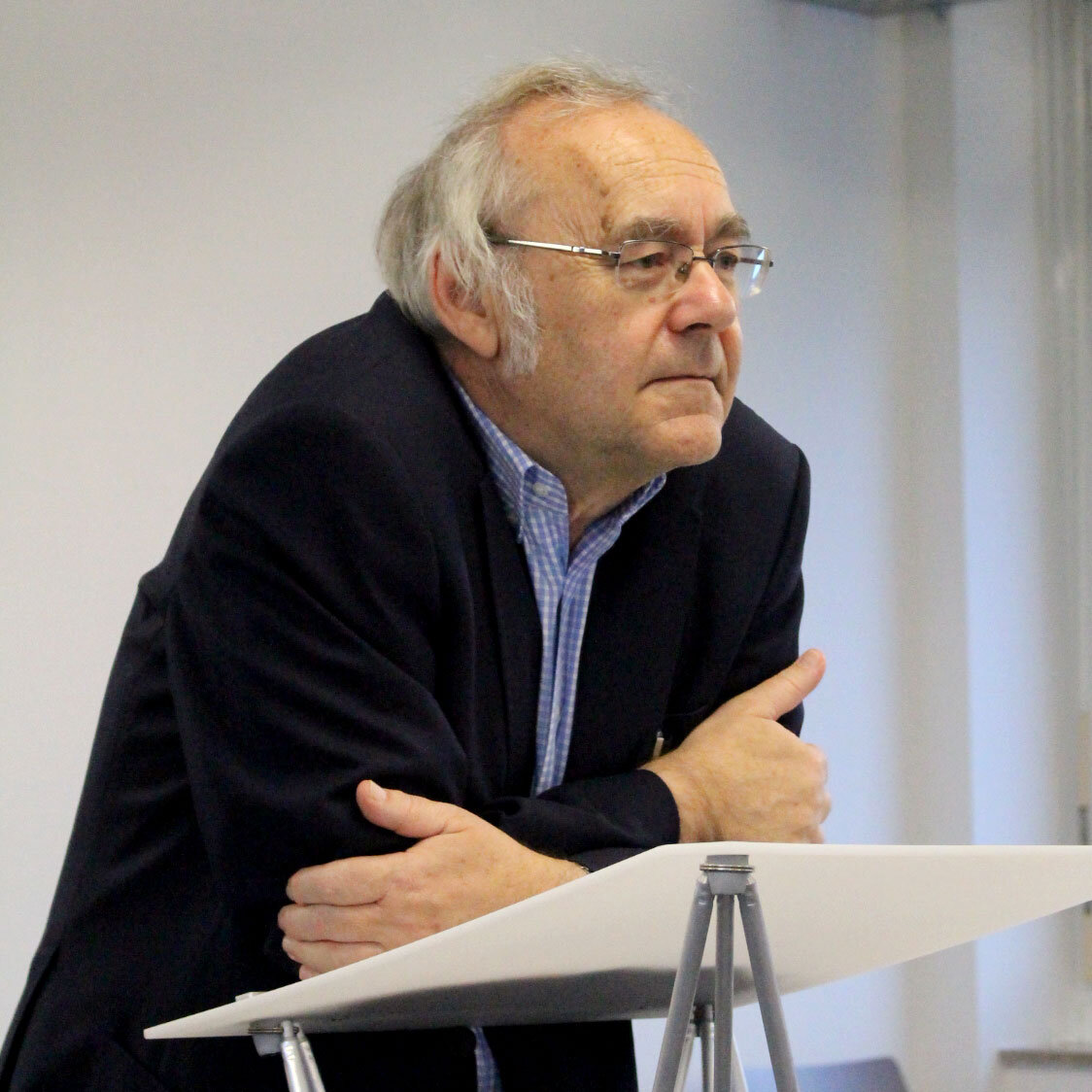The Beyond of Philosophy 6


25. “If the object of the description is nothing more than a description, then the apple that is lying on the table and supposed to be described is a description. But this is nonsense. What is lying on the table is not a description of an apple but the apple.”
The object of the description is the description already performed. And in this case the description already performed is not /the apple/ but /the apple that is lying on the table/. The object of the description to be performed is not some apple or other, but the apple that is lying on the table.
26. “I am sitting on a sofa. I describe the sofa: ‘The sofa weighs eighty pounds.’ Am I now sitting on the description of the sofa?”
The object of the description (from now on) “The sofa weighs eighty pounds.” is not the sofa, not some sofa, but “the sofa I am sitting on.” And after the description “The sofa weighs eighty pounds.” I am not sitting on the description of the sofa, but on the sofa, which weighs eighty pounds. The sofa I am sitting on becomes through the description “The sofa weighs eighty pounds.” the sofa I am sitting on and which weighs eighty pounds. The description so far/the sofa I am sitting on/ was transformed in the description from now on “The sofa weighs eighty pounds.” into a new given description /the sofa I am sitting on and which weighs eighty pounds/ that can again be continued, expanded, or changed in a further description.
27. “When every description changes the object of the description by this description then it seems justified to say that the table gets four legs only through the description ‘The table has four legs.’ – and this would be outright nonsense. The table had four legs already before the description ‘The table has four legs.’; in any case it did not get the four legs only through the description. There are only two possibilities: Either the table had four legs already before the description ‘The table has four legs.’– then the thesis that the object is altered through its description is false – or the table did get the four legs through the description ‘the table has four legs.’ But then there was no need for the carpenter.”
To describe the table is to continue the thereby already present description /the table/. This happens in the above-mentioned example through the description from now on “The table has four legs.” The table became through the description “The table has four legs.” the table that has four legs.
Does this mean the table had before the description “The table has four legs” more or less than four legs or none at all? Such an impression could arise if it is overlooked that the object of the description “The table had four legs already before the description ‘The table has four legs.’” is no longer the table, but the table which has four legs.
The table had four legs already before the description “The table has four legs.”
But according to Dualizing Speech the object of the description “The table had four legs already before the description ‘The table has four legs.’” is not the by then already present description /the table that has four legs/ but a ‘language-distinctly’ presupposed object, that is a table and has four legs and that is determined (or at least given) before anyone has described this object.
The assumption and presupposition of a yet undescribed table, which nevertheless has four legs, is the impossible and literally indescribable attempt to say that the table has four legs before it has been said that the table has four legs. (Although of course it can be said that the table has four legs before hic et nunc – that is repeatedly – it is said “The table has four legs.”)
In Non-dualizing Speech the statement that the table has four legs already before the description “The table has four legs.” only expresses that the description “The table has four legs.” does not exceed the already made description /the table that has four legs/ and does not add anything to it.
The nonsense of the assertion that the table only gets four legs through the description “The table has four legs.” lies for Dualizing Speech therein that an (allegedly) ‘language-distinct’ object is ascribed attributes which the object acquires by virtue of these ascriptions.
In Non-dualizing Speech in contrast the assertion that the table gets four legs through the description “The table has four legs.” is nonsensical because it does not take into consideration that the object of a description is changed/transformed through this description into a new object: The object of the description “The table has four legs.” is the present description /the table/. But it is not the description /the table/ that gets four legs, rather the description so far /the table/ is transformed through the description “The table has four legs.” into a new description so far /the table that has four legs/ as an object of a new, further description.
28. “Another difficulty: The teacher asks the student: ‘It has four legs and hops. What is it?’ and the student answers: ‘A rabbit.’ In this case we have the description of the object and the object is missing. So how can the object of the description be the already present, the already performed description?”
Here we need to distinguish between the (description-)situation of the teacher and the (description-)situation of the student. For the teacher the rabbit is the object of the description: “It has four legs and hops.” For the student the description “A rabbit.” is the description of that which has four legs and hops. The object of what the student is expected to say is what the teacher has already said. The object of the description of the student is the description denoted and pre-given by the teacher, which the student is supposed to continue and he does so in the description (from now on): “A rabbit.”
29. Dualizing Speech begins with the decision for a ‘language-distinct’ world and reality, for ‘language-distinct’ objects.
By presupposing objects as ‘language-distinct’ they remain unaffected by the influence through descriptions and other language-activities. The descriptions cannot change the objects they describe. The identity of objects against different descriptions is warranted at least within the chosen (or predetermined) frame of reference. Various deviating or even contradicting descriptions of one and the same object are possible. Therefore it is promising to look for methods through which the various descriptions of the same objects can be judged according to their relation to the described objects as ‘true’, ‘adequate’ etc. It is as well possible to find out and name the conditions which need to be fulfilled by descriptions to be worthy of predicates like ‘true’, ‘adequate’ etc. Questions how these purportedly ‘language-distinct’ objects come about don’t get asked. -- To pose such a question is not in the interest of Dualizing Speech, because this could endanger the status of ‘language-distinct’ objects as a conditio sine qua non of rational discourse.
30. The function of ‘language-distinct’ objects only becomes manifest when dissent arises in our discourse and should be solved – that is when various diverging, conflicting or even contradicting theories, opinions, theses etc. meet and clash. If there never had been any disagreements and if there would not be any, then the discourse could run only in one direction and a recourse to allegedly ‘language-distinct’ objects would be superfluous. The language-reality dichotomy would remain without consequences and not be able to influence the direction of discourse.
31. Only a procedure/proceeding which does not rely on the presupposition of ‘language-distinct’ objects can critically explain how this presupposition has come about. A first attempt of such an explanation of the formation of the basic principle of Dualizing Speech shall now be made in the following example.
32. The example: A table is standing in the corner. Two persons, A and B, describe the table standing in the corner in different ways. A describes the table standing in the corner so: “The table standing in the corner is round.” and B describes the table standing in the corner differently: “The table standing in the corner is square.”
33. In order to be able to describe the table standing in the corner in different ways, to be able to talk about the table in the corner in different ways, to have different opinions about the table, it is a must that A and B agree with respect to the description (opinion, sentence, view, statement) so far /the table standing in the corner/.
To describe the table standing in the corner differently just means not to differ with regards to the pre-given and already carried-out description /the table standing in the corner/ but with regards to descriptions, which come afterthe description so far/the table standing in the corner/.
34. Dissensions about the table standing in the corner can only begin after the common/consensual description so far /the table standing in the corner/. The object of the different descriptions is outside of and prior to the discussion and forms the necessarily precedent basic agreement. The differing descriptions can only arise after this basic agreement. The object of the then diverging descriptions is in our example nothing but the consensually performed description /the table standing in the corner/.
35. Of course one can discuss if there is a table standing in the corner: then the object of the (then) differing descriptions is not the table standing in the corner, but – perhaps – the piece of furniture standing in the corner. So when the discussion is not about the table standing in the corner but about the piece of furniture standing in the corner (and a description of the piece of furniture could be: “The piece of furniture standing in the corner is a table.”) then the discussion is not if there is a piece of furniture in the corner; whereas the discussion may well be about the piece of furniture being a table or a chair.
36. To describe the table in the corner in different ways means nothing more than to continue the one and same description already performed by A as well as B /the table standing in the corner/ in different ways. This happens through the description of A: “The table standing in the corner is round.” and the deviating and contradicting description of B: “The table standing in the corner is square.” The common description so far , the common object, forms the common starting basis for these diverging descriptions.
37. The common starting basis, namely the table standing in the corner , is not neutral but neutralistic : it allows a continuation of the discourse in different directions without discriminating one of the diverging descriptions (from now on) in favour of the other. It enables the different descriptions but does not select them into accurate, adequate and other descriptions.
38. The neutralistic starting basis is compatible with both contradicting descriptions, “The table standing in the corner is round.” and “The table standing in the corner is cornered.” Therefore a decision for or against one (or both) of these descriptions cannot be reached by a reference onto the starting basis.
The common object of both descriptions (namely the descriptions so far , which coincide) is hence incapable of serving as a decision criterion for knowledge.
(Analogy: A road bifurcates. The course of both then diverging roads cannot be justified through a reference to the common part of the road.)

Josef Mitterer is an Austrian philosopher.
Next: The Beyond of Philosophy 7
The Beyond of Philosophy 1 here
The Beyond of Philosophy 2 here
The Beyond of Philosophy 3 here
The Beyond of Philosophy 4 here
The Beyond of Philosophy 5 here